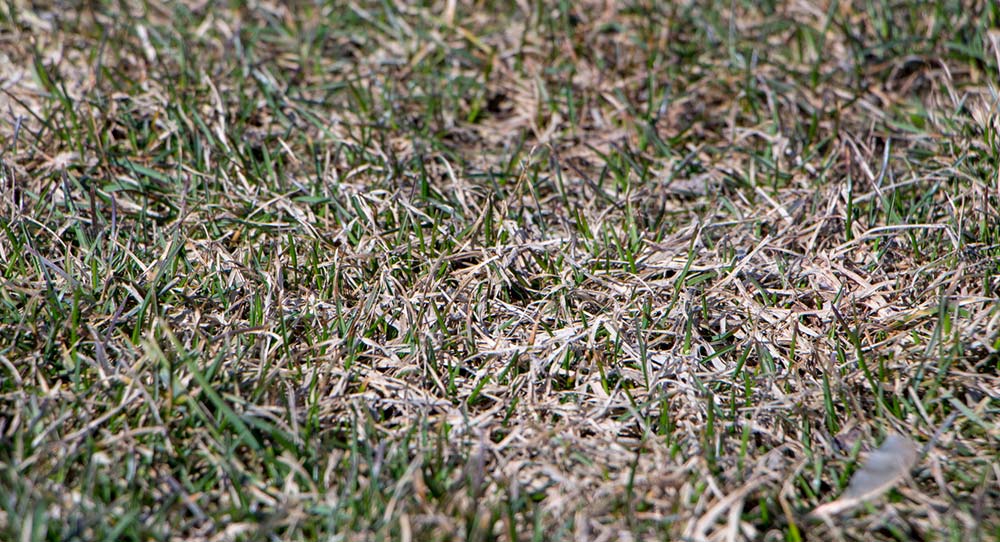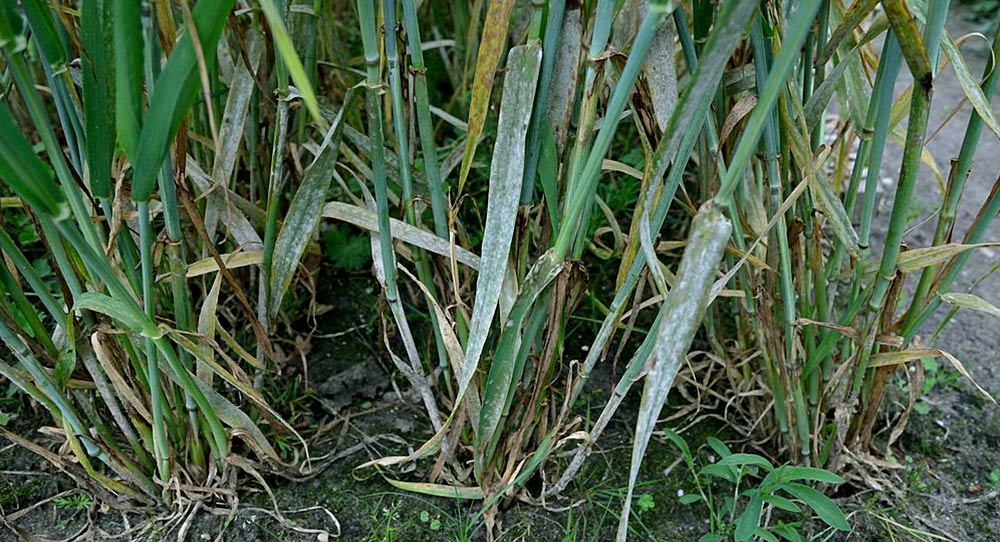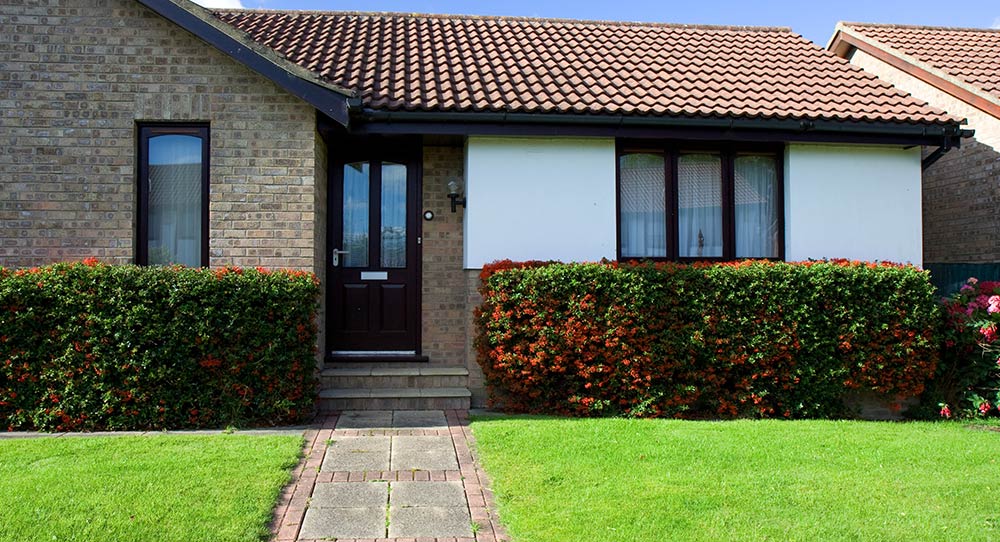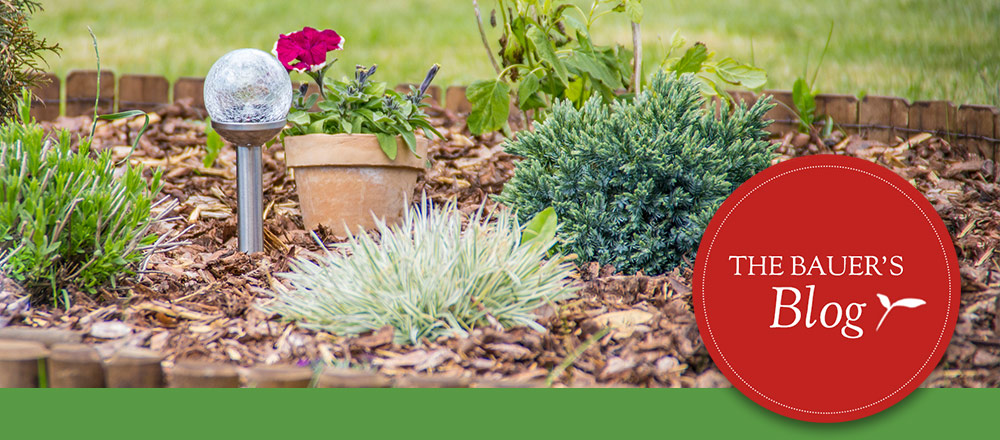We try to pick and nurture plants to be comfortable in our area, but can never totally take into account what the weather has in store for us every summer. Many garden problems are entirely dependent on the weather. While hot and dry weather comes with its own set of difficulties in maintaining a healthy lawn and garden, we can expect a different set of issues when there’s a string of cool, cloudy, and wet days.
In the cooler and damper weather, different plants will thrive, and we’ll have new fungi and diseases to think about in our backyards. While we can’t exactly guess what weather the rest of the summer will bring, we do know that it will probably be pretty lush! If the sun comes out for a few weeks and dries things up, the lawn issues might not be serious. Of course, more damp and cool weather could make matters worse, instead.

Mildew on the Lawn
Our lawns can usually handle the extra water and cool days, but combined with poor air movement, and you might start to see some patches of mildew showing up. Mildew is very subtle when it starts, showing only as tiny spots of white on your grass, but as it progresses, it can get worse and look like your lawn has been sprinkled with talcum powder.
Mildew is a fungus taking advantage of the wet and undisturbed conditions on your lawn. Places that don’t see a lot of sun or healthy breezes are the first suspects in a mildew case. Look in places that are between houses, sheltered, or typically shaded. If the grass in these areas stays wet overnight all the time as the air cools, that’s when the fungus can take hold.

The good news is that Mildew isn’t actually that dangerous. Unless it runs rampant, it won’t kill your lawn, and while it could irritate some allergies, it’s otherwise harmless. The bad news is that it can be pretty unsightly and can spread easily, so most of us are eager to get rid of it strictly for aesthetic reasons.
Mildew Treatment
Product Fixes: The quick fix for lawn mildew is to kill the fungus. Many people prefer to use copper-based fungicides, as they are relatively safe. Be sure to follow the directions on the label and never dose more than recommended. Adding more fungicide won’t make anything work faster or better, and could even start causing other lawn problems.
Of course, nobody wants just to treat the fungus and be stuck retreating all summer. Unless some of the other problems contributing to the fungus are controlled, it’s likely to come back after treatment.
Other Mildew Control: Some easy solutions to fungus come down to preventing it from spreading and growing. Take care when mowing a lawn with fungus, as you can easily move it beyond the area it affects. To prevent the growth of fungus in the first place, avoid watering the lawn at night. In cool conditions, grass that is still damp into the evening is a prime location for fungus to grow. Adjust your watering schedule or automatic sprinklers – if the weather is this cool and damp, your lawn probably doesn’t need that much extra watering anyways. Instead, focus on watering infrequently, but deeply when you do. Also, reduce how much nitrogen your grass is fertilized with as the parts growing in the shade won’t need as much.

Thinking Long-Term About Mildew: Some grasses are better designed to grow in the shade than others. If you are noticing that mildew is a chronic problem for your lawn, start overseeding the shaded areas with a mix that is designed for growing in the shade. These types will be designed to be mildew resistant and will thrive in shaded and sheltered conditions. Also, have a look at your yard and lawn, and consider how you can invite more air movement and breezes in problem spots of your yard to help keep fungus under control. If a mildew problem is persistent and disheartening, consider other options, like a mulched bed for shade-loving plants instead of lawn in tricky areas.
Mildew typically doesn’t threaten the long-term health of your lawn until it becomes a big problem, but it looks bad enough that we want to get rid of it. While cool and wet summers can make mildew a new problem for some yards, it can make an existing problem worse for others. Treating and fixing the fungus at the source are the best ways to keep your lawn looking clean and lush this summer while we wait for the sun to shine some more.







Leave A Comment